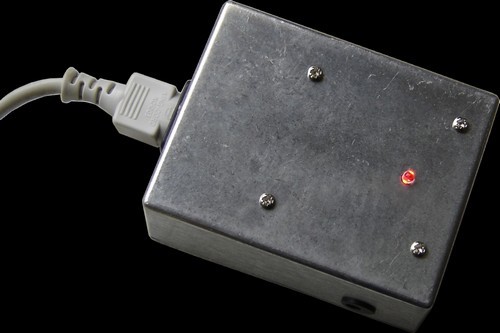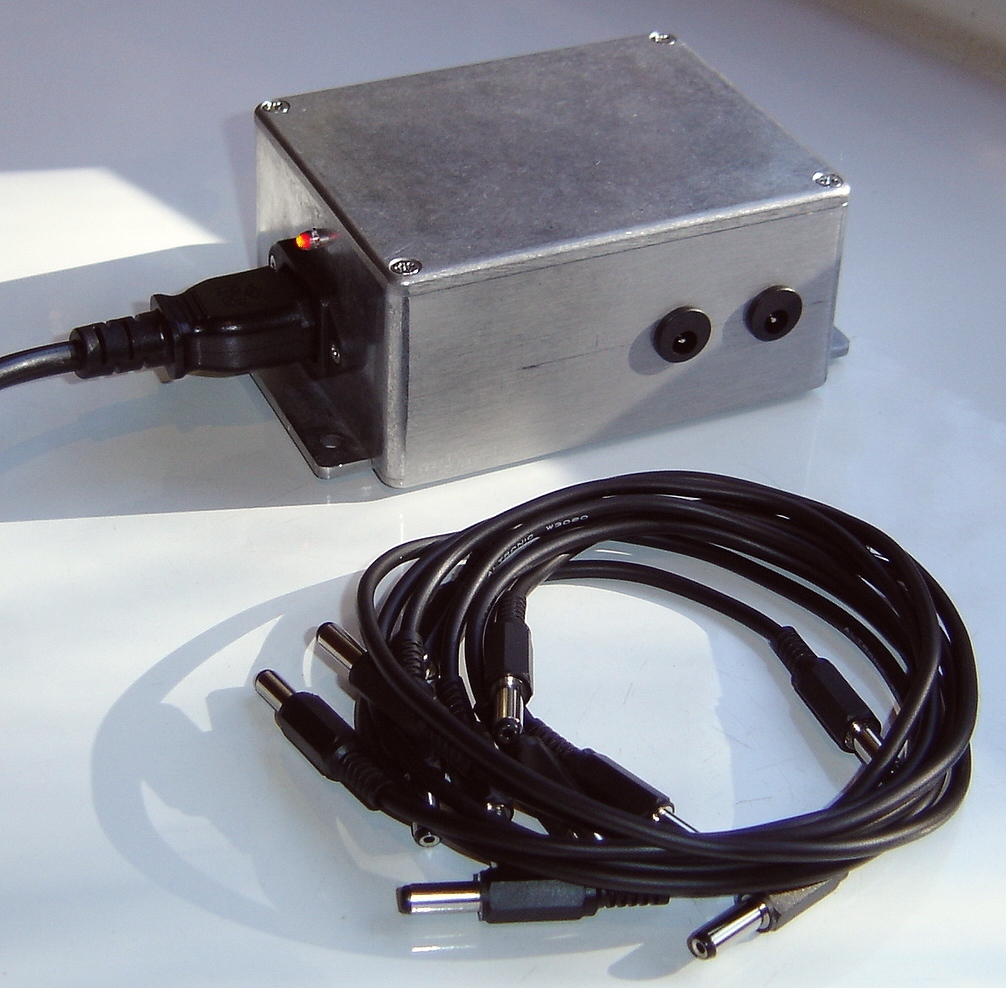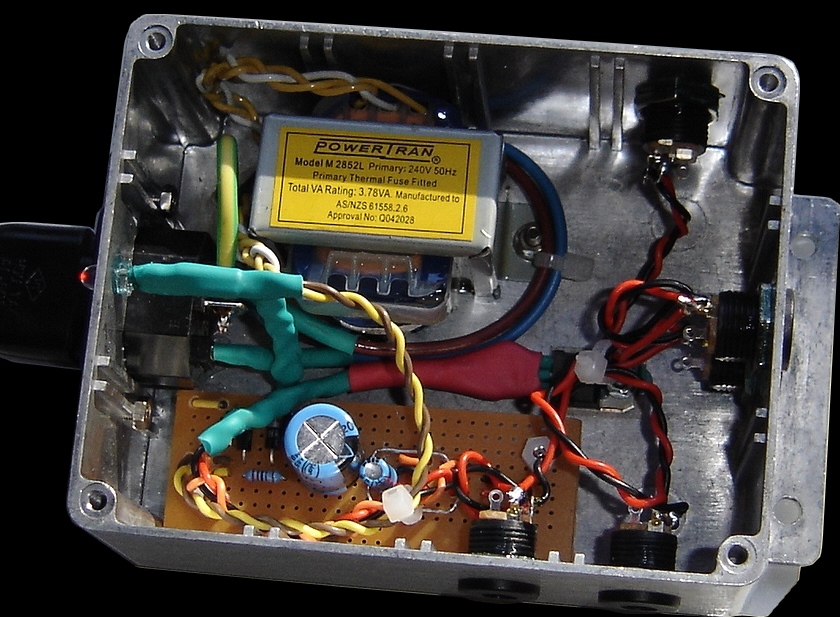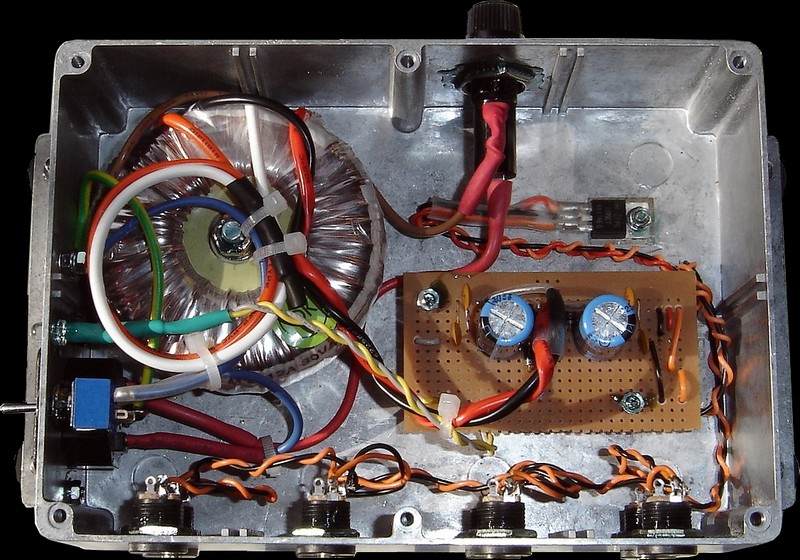Guitars of Love
![]()
|
Sick of dozens of crappy 'wall warts' around the place... Build a regulated 9 volt guitar FX pedal supply |
 |
|
|
This project outlines the construction of a simple high quality 9 volt power supply suitable for running guitar FX pedals. It produces exactly 9 volts DC without the hum and noise of a typical 'Wall Wart'. The transformer used in this one is rated at 300mA (300 milli-amps or 0.3 amps), though the 3 pin regulator is rated up to 1A.
You can download the pdf parts list with pictures. Just click on the pic below:
|
|
|
At right is the 'schematic' for the circuit board inside the unit. It is a simple mains transformer supplying 12.6 VAC to a bridge rectifier (4 x diodes) and a large electrolytic filter capacitor just before the 9 volt 3-pin regulator. After the regulator comes another smaller storage cap; a 4700 ohm (4.7K) resistor to the power indicator LED; and the output DC sockets which are the same as on FX pedals (male). The very small 0.1uF (100 nano Farad) caps are to reduce HF noise that may be generated by the diodes and the regulator. The +ve voltage is connected to the outer rim off the socket (like all FX pedals), but is islolated from the alloy metal case so as not to cause any problems with shorting out. The case is solidly earthed to the mains earth however to make doubly sure of safety. |
|
|
At right the basic board and case layout: Note that the (white) centre tap wire (below pic) on the secondary winding of the transformer is not used, and should be insulated with heatshrink.
|
|
|
At right the connections to the transformer and from the board to the 9V regulator attached to the alloy case. The hookup wire should be routed under the board and threaded through the board as shown in the photographs below: Connections to FX pedals will require a male-to-male 2.1mm DC plug lead which could then be paralleled to several other leads. I have allowed for two DC sockets out but more could easily be installed. |
|
|
Inside the completed supply: The copper breaks are scalloped out with a 5/32 drill bit with a rubber band wrapped around as a handle.
All the hookup wires are threaded through the board by just drilling 1/16th holes where convenient (without disrupting the circuit) and feeding the wire up from the underside to the appropriate hole. This makes for highly reliable wiring. If the wires are just directly soldered in from the top they easily fatigue and break off whilst assembling. Many of the track breaking scallops can be used for this dual purpose. |
|
|
... |
 |
|
Pictured at right is a new version with 5 output sockets. It uses a flanged case and a different layout to facilitate the extra sockets using an IP66 industrial standard Altronics case (P/N H0423). |
|
|
... |
 |
 |
|
| Pictured at right is another version with 8 output sockets. It employs a 30VA toroidal power transformer with 1.6 amp capability and a larger a flanged case to facilitate the extra sockets using an IP66 industrial standard Altronics case (Altronics part number H0427). This baby will run any number of pedals! |
 |
|
|
 |
| kelvin@guitars-of-love.com |